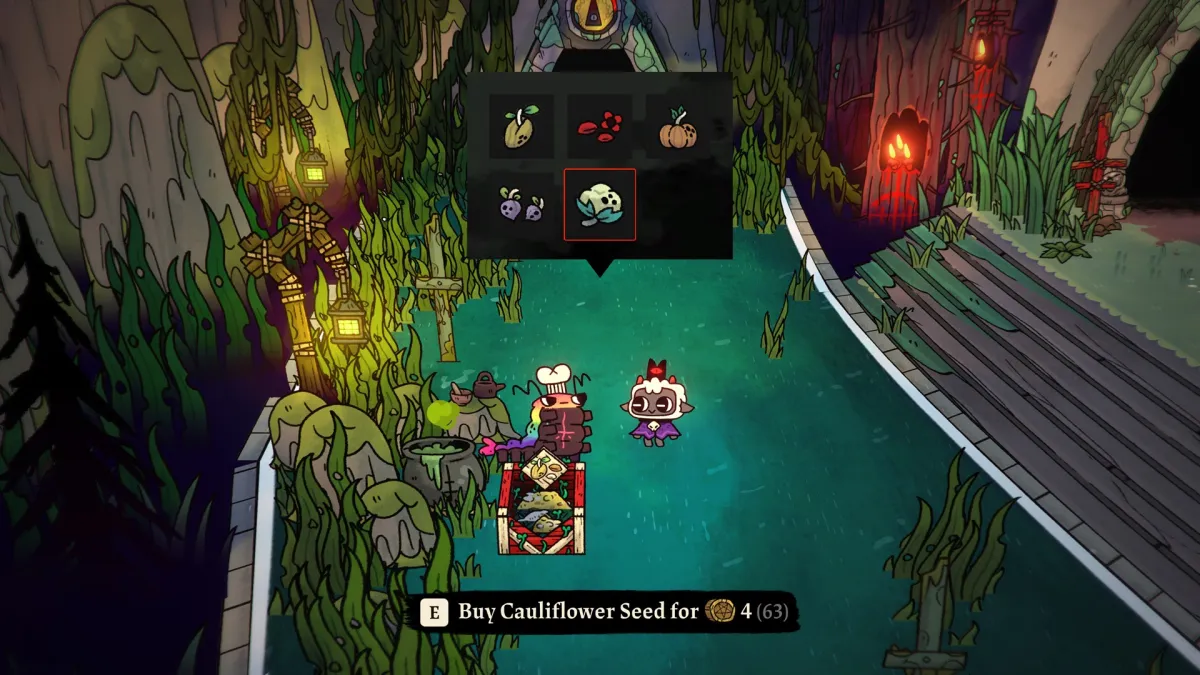Cult of the Lamb Farming: A Guide to Sustaining Your Hub
It’s one thing to pick up random stuff that might be edible in Cult of the Lamb. Still, it’s better if your hub has a sustainable source of food. Here’s our Cult of the Lamb farming guide to help you plant seeds, harvest crops, and use buildings that let your followers do the work for you.
Cult of the Lamb farming guide – Seeds, harvesting crops, and managing followers
Early on in Cult of the Lamb, you’ll only have grass and berries as cooking ingredients. These won’t be enough to alleviate hunger, so you need to learn how to acquire seeds to have the ingredients necessary to cook for your clan. Apart from berries, you’ll also want to grab Camellia Seeds, Pumpkin Seeds, Beetroot Seeds, Cauliflower Seeds, Menticide Mushroom, and others. There are a couple of sources for these items:
- Regular dungeon exploration – Camellia and Menticide Mushroom can be found in Darkwood and Anura respectively. They look fairly distinct from regular objects in those zones. I recommend hacking and slashing at everything in dungeons so you get seeds, flowers, and other useful items.
- Specific dungeon rooms – If you see vegetable icons in dungeon rooms, those are single rooms that hold a lot of the given item. Choose those rooms every time you see them because they are rare.
- Miniboss drops – After defeating a boss, some items will pop up. You can then choose particular seeds as a reward.
- Rakshasa NPC – An NPC named Rakshasa will set up shop to the right of the dungeon entrance area in your hub. You can then purchase seeds using gold. I only recommend doing this if you’re in a pinch because the seeds cost 100 gold each which can add up to be a lot.
To get started with farming in Cult of the Lamb, you’ll need to plop down a Farm Plot (a Tier 1 building option). First, you need to unlock this by spending one Divine Inspiration. Each tile lets you plant a seed. You can then water these and add fertilizer. The crops can then be harvested after a couple of in-game days pass yielding three to four crops and there’s an 80% chance you get a seed.
Of course, you don’t want to be doing all the chores yourself. That’s why your cult has Followers. To optimize crop production, you should consider upgrading with these options:
- Farming Bundle
- Farmer Station – Allows you to assign a follower to manage the crops within its area-of-effect.
- Seed Silo – Place the seeds here and followers will automatically plant them in plots.
- Farmer Station II – A mid-game upgrade that also lets followers harvest the crops so you don’t have to do it yourself.

There are also other upgrades that aren’t mandatory, though they still support the farming process:
- Harvest Totem/Devotion Harvest Totem – Speeds up the growth of your crops.
- Fertilizer Silo – Dump poop in here and followers will automatically use it as fertilizer.
- Compost – Drop grass here so followers can use it as fertilizer.
- Scarecrow/Trap Scarecrow – Not particularly important, but they do make birds fly away instead of stealing your seeds.

Last but not least, there’s the Ritual of the Harvest (available as an option if you choose the Sustenance Doctrine for the third time). It causes all plants to be ready for harvest, perfect when you’ve just planted a lot of stuff and need the food.
Those are the basics of farming in Cult of the Lamb. By creating an endless cycle of seeding and reaping, you’ll always have a full supply of ingredients necessary to feed your cult. One thing that doesn’t come so naturally is Sin — but we have a guide to help you farm Sin if you’re looking to speed up that process.
